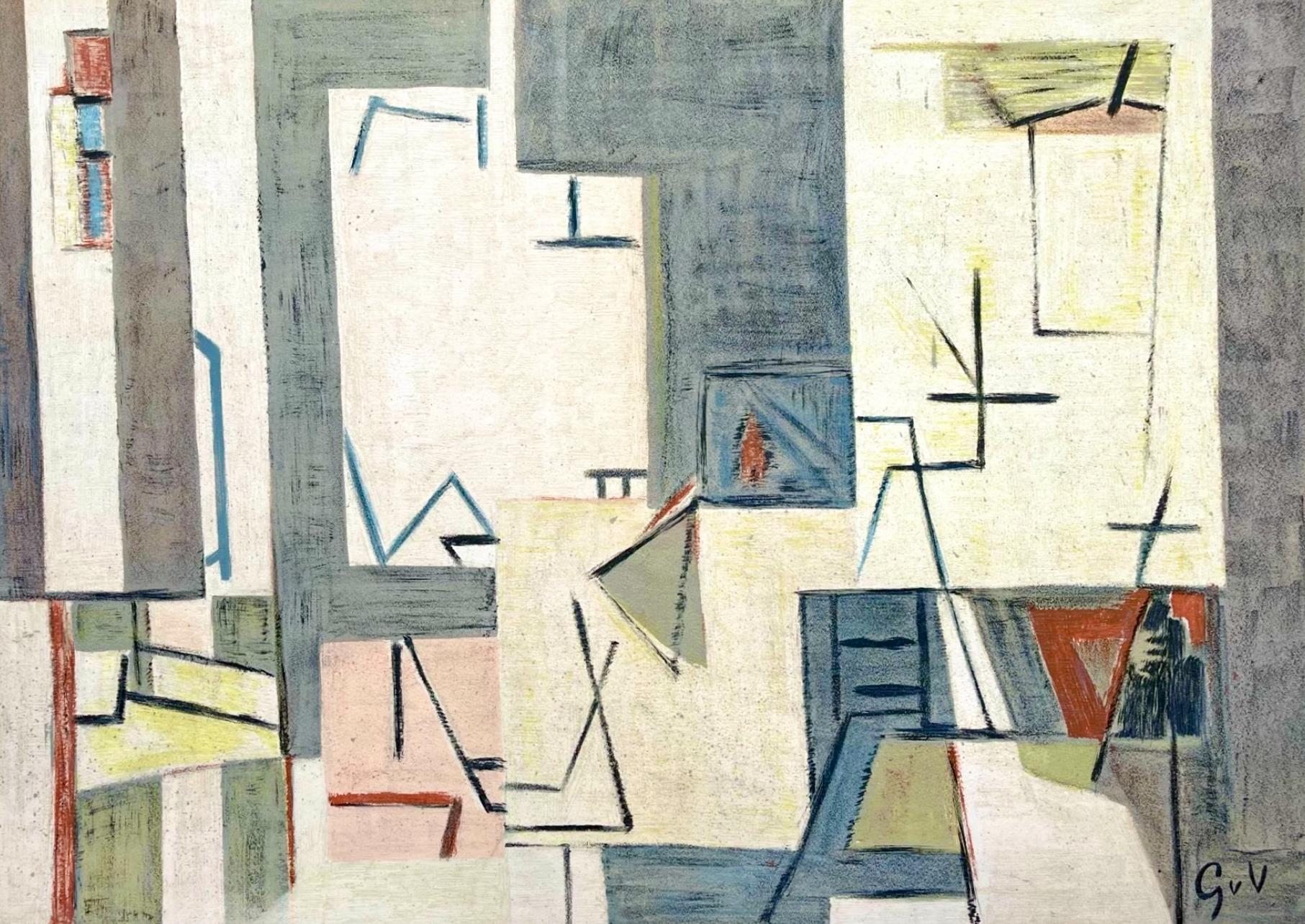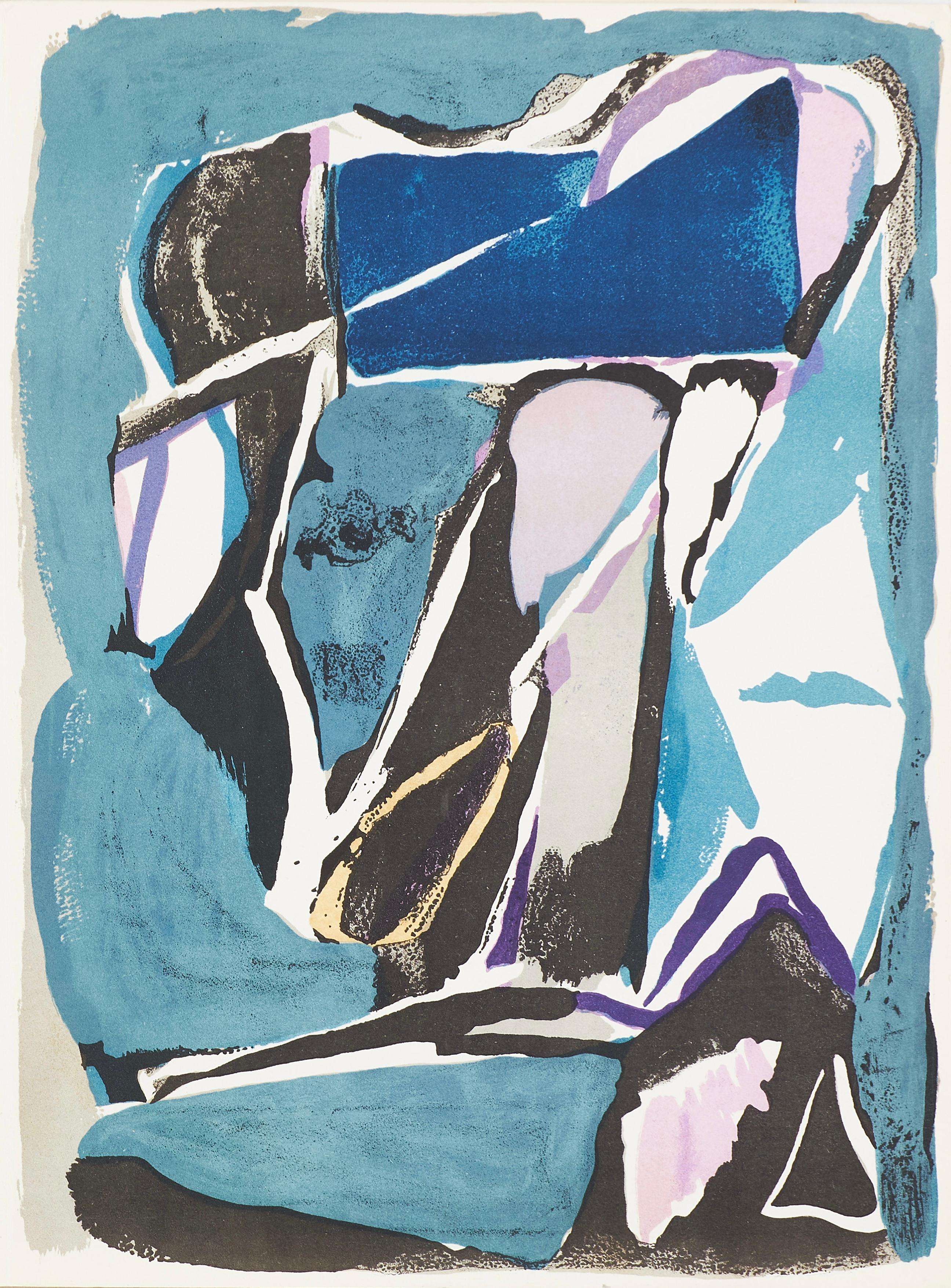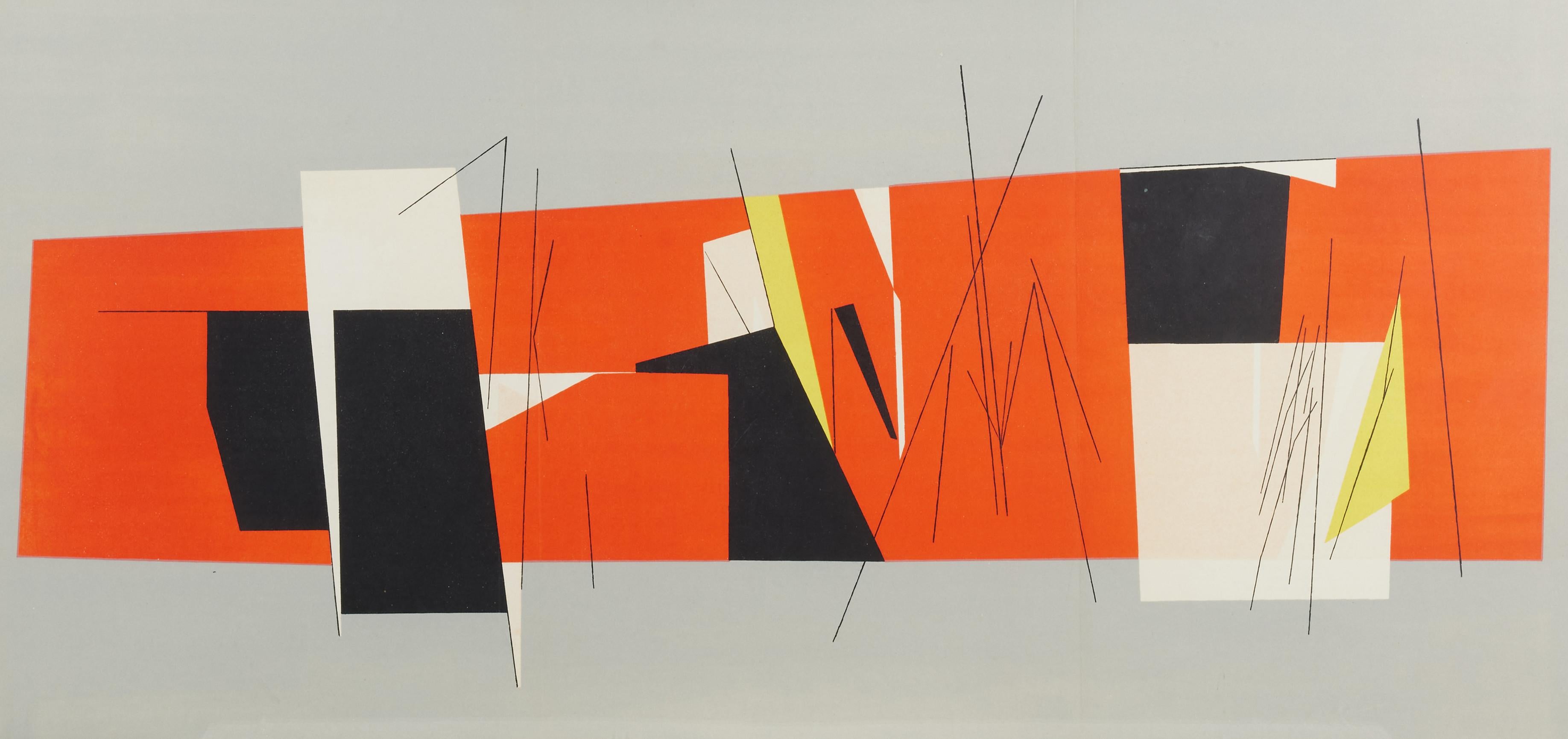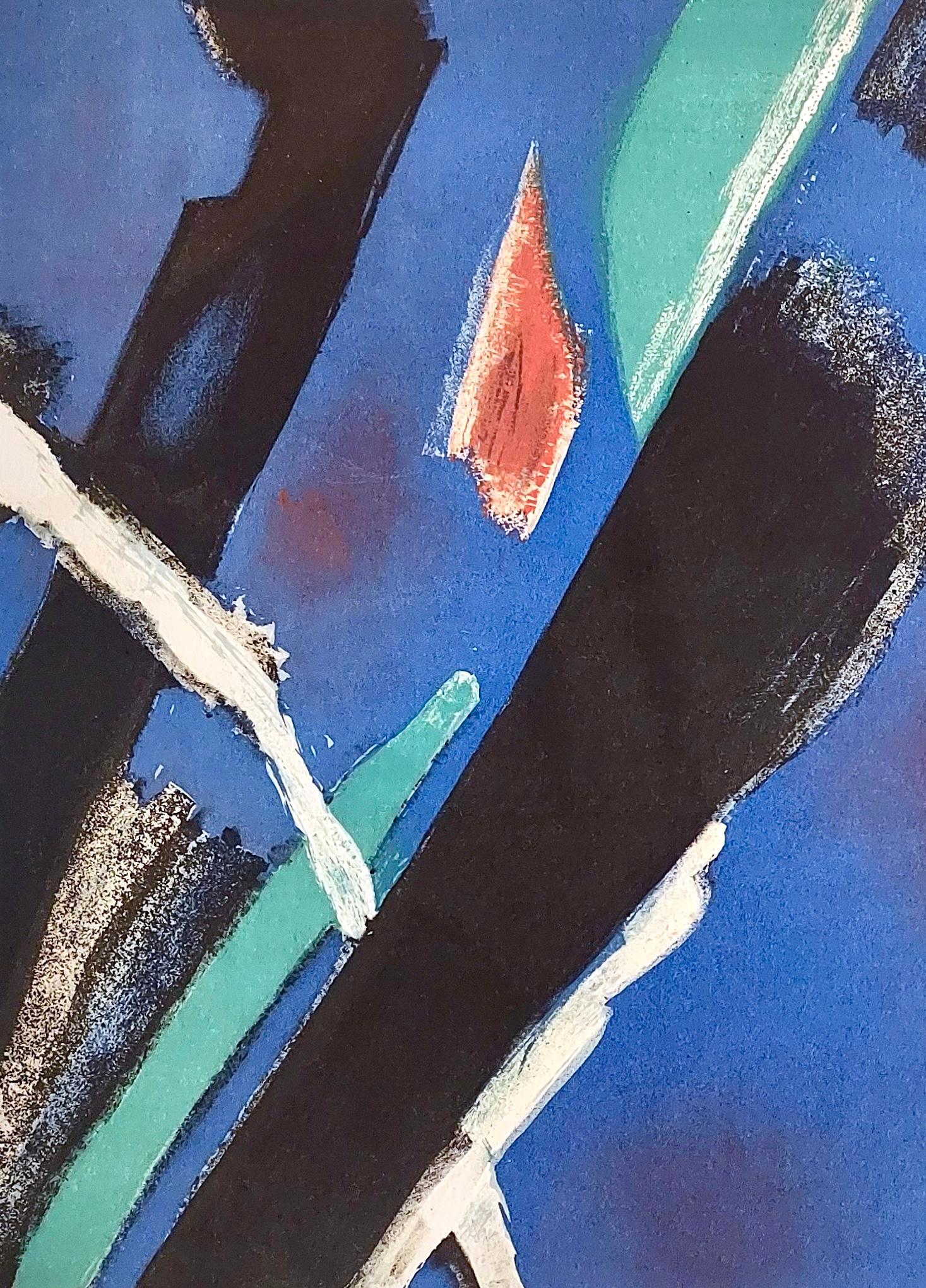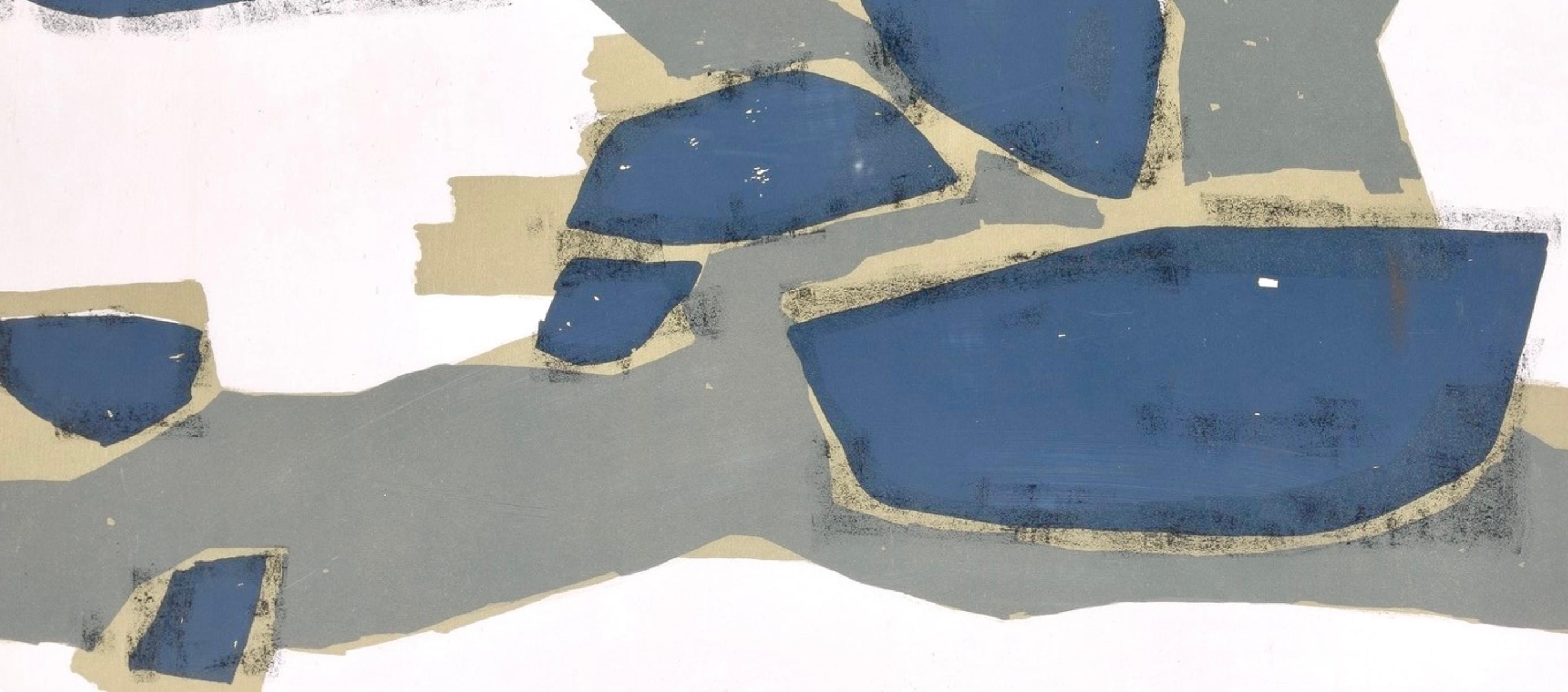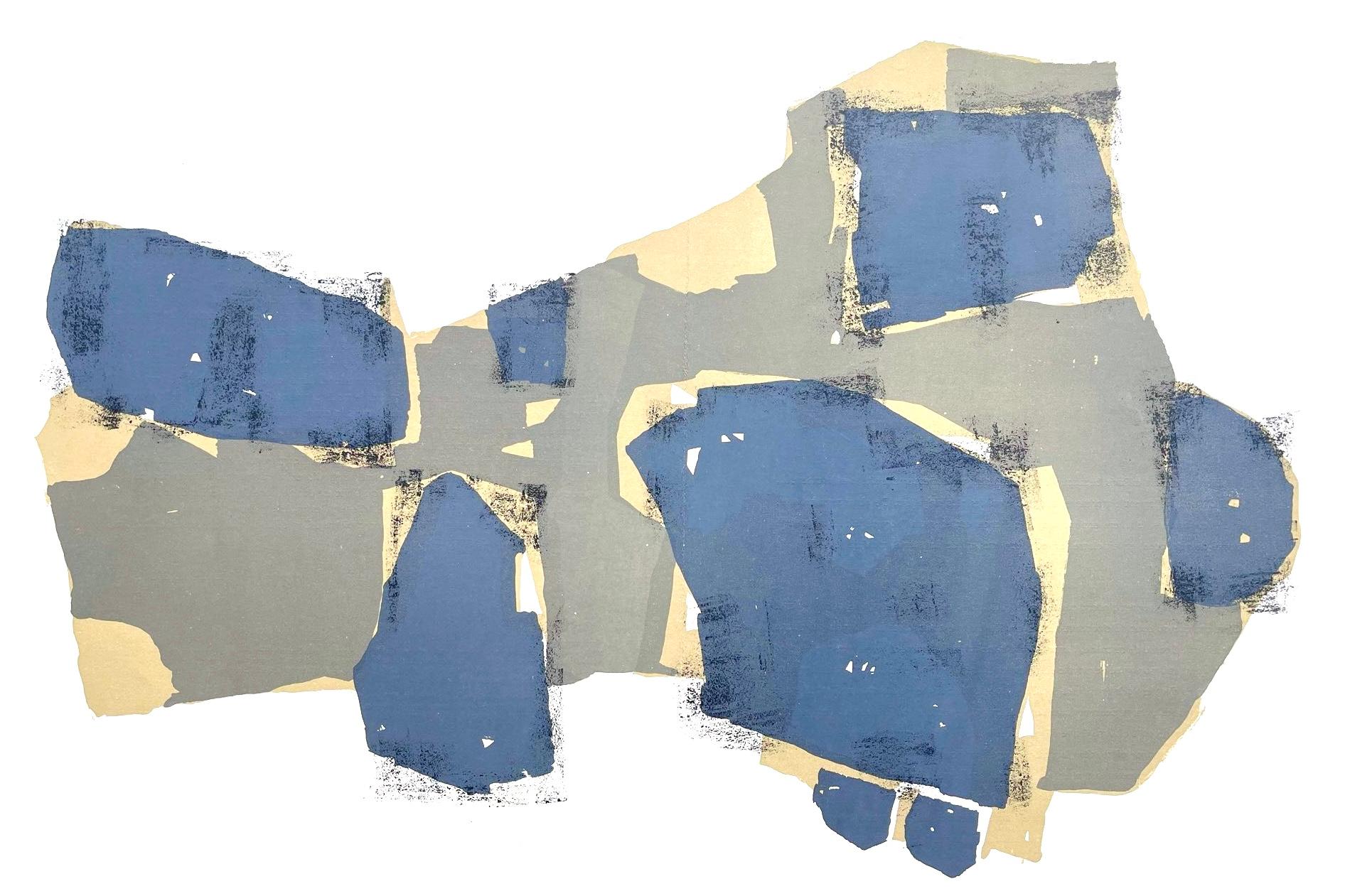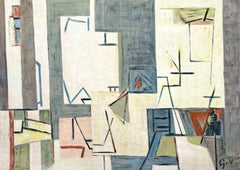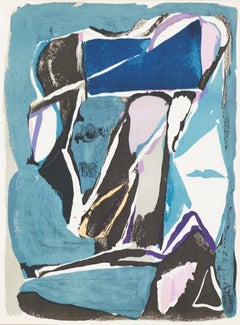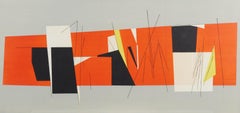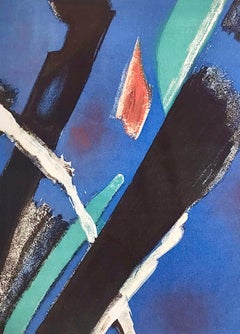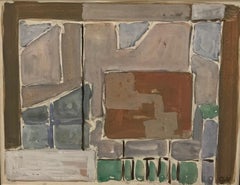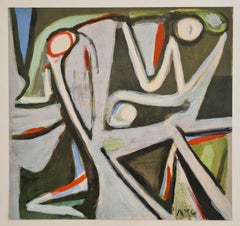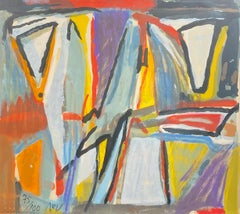Items Similar to Composition, Derrière le miroir
Want more images or videos?
Request additional images or videos from the seller
1 of 10
Geer Van VeldeComposition, Derrière le miroir1952
1952
$716
$89520% Off
£539.87
£674.8320% Off
€622.12
€777.6520% Off
CA$993.29
CA$1,241.6120% Off
A$1,112.97
A$1,391.2120% Off
CHF 579.34
CHF 724.1820% Off
MX$13,615.49
MX$17,019.3620% Off
NOK 7,353.70
NOK 9,192.1220% Off
SEK 6,945.48
SEK 8,681.8520% Off
DKK 4,644.27
DKK 5,805.3320% Off
Shipping
Retrieving quote...The 1stDibs Promise:
Authenticity Guarantee,
Money-Back Guarantee,
24-Hour Cancellation
About the Item
Lithograph on vélin paper. Paper Size: 15 x 22 inches, with centerfold, as issued. Inscription: Signed in the plate and unnumbered, as issued. Notes: From the folio, Derrière le miroir, N° 51, 1952. Published by Aimé Maeght, Éditeur, Paris; printed by Éditions Pierre à Feu, Galerie Maeght, Paris, 1952. Additional notes: Excerpted from a Christie’s, New York lot essay, The life span of Derrière le Miroir was thirty-five years. Publication began in 1946. Aimé Maeght, initiator of Derrière le Miroir, had already made few attempts to start publications illustrated with fine printed lithographs in colours in the years prior to the launch of Derrière le Miroir. The name, Derrière le Miroir was suggested by Jacques Kober, manager of Galerie Maeght. The gallery had opened in 1945; the first number of Derrière le Miroir was released a year later. For this first issue Geer van Velde was invited to create lithographs to illustrate the publication. The lithographs in the first issue was printed by Mourlot, Paris. The first three issues of Derrière le Miroir were unsuccessful for Maeght as far as the edition size—the initial print-runs were far too large. From 30,000 for the first issue, the number was taken down to 10,000 for numbers two and three, until Derrière le Miroir number four was published in an edition of 1500. Maeght instituted a policy whereby unsold issues were recycled and used for the fabrication of new paper for the coming editions—this served to both conserve resources and also usually result in ultimate edition sizes far less than 1,500. With number four, the permanent format for Derrière le Miroir was established. Lithographs in colours were key; text was limited to comments on the featuring artist's exhibition taking place in the Galerie Maeght, and this catalogue format was defining to Derrière le Miroir. Galerie Maeght took on the leading role in Paris and presented all main artists including Braque, Matisse, Chagall, Léger, Bonnard, Chillida and many more. So too did Derrière le Miroir. The idea of a magazine was meanwhile still on the mind of Aimé Maeght. He found an insert as a solution. Two, and later four, pages of art review were inserted from 1952 onwards. In 1968 this find had ripened to independency and the dream of Aimé Maeght was now a tangible fact named l'Art vivant. Derrière le Miroir was on it's own again. Over 250 issues in a row. At that point publisher Aimé Maeght wished to make a mark with the publication of an hommage to all who once contributed to the magazine which came in the form of issue number 250, but was delayed by the death of Aimé Maeght. It was published after number 253 in 1982 and became a tribute to Aimé and Marguérite Maeght and 35 years of friendship with artists and poets. The era of Derrière le Miroir was closed with that final publication.
GEER VAN VELDE (1898-1977) was a Dutch painter. Van Velde was the second son of Willem Adriaan van Velde, then owner of a small case of inland waterway transport fuelwood and charcoal on the Rhine and Hendrika Catharina von der Voorst, illegitimate daughter of an earl. Catharina and her four children (Neeltje, Bram, Geer, and Jacoba) were abandoned by Willem Adriaan after the bankruptcy of his business, leaving them in misery. Moving frequently, they eventually settled in The Hague in 1903. In 1910, at the age of twelve, Geer became an apprentice designer in the firm with Schaijk & Eduard H. Kramers. Kramers encouraged Geer and his brother Bram van Velde to develop their interest in painting and funded both to a certain degree. The brothers moved to Paris; their experience of the 1925 Arts Décoratifs exhibition had motivated the move. Geer rented his own studio in 1926. He had a close relationship to writer Samuel Beckett; their common friend, art patron Peggy Guggenheim, suggested it was a homoerotic relationship. Beckett bought some of van Velde's paintings and wrote about them.
- Creator:Geer Van Velde (1898 - 1977, Dutch)
- Creation Year:1952
- Dimensions:Height: 15 in (38.1 cm)Width: 22 in (55.88 cm)
- Medium:
- Movement & Style:
- Period:
- Condition:
- Gallery Location:Auburn Hills, MI
- Reference Number:1stDibs: LU1465216420252
About the Seller
4.9
Platinum Seller
Premium sellers with a 4.7+ rating and 24-hour response times
Established in 1978
1stDibs seller since 2021
1,151 sales on 1stDibs
Typical response time: <1 hour
- ShippingRetrieving quote...Shipping from: Auburn Hills, MI
- Return Policy
Authenticity Guarantee
In the unlikely event there’s an issue with an item’s authenticity, contact us within 1 year for a full refund. DetailsMoney-Back Guarantee
If your item is not as described, is damaged in transit, or does not arrive, contact us within 7 days for a full refund. Details24-Hour Cancellation
You have a 24-hour grace period in which to reconsider your purchase, with no questions asked.Vetted Professional Sellers
Our world-class sellers must adhere to strict standards for service and quality, maintaining the integrity of our listings.Price-Match Guarantee
If you find that a seller listed the same item for a lower price elsewhere, we’ll match it.Trusted Global Delivery
Our best-in-class carrier network provides specialized shipping options worldwide, including custom delivery.More From This Seller
View Allvan Velde, Composition, Derrière le miroir (after)
By Geer Van Velde
Located in Auburn Hills, MI
Lithograph on vélin paper. Inscription: Unsigned and unnumbered, as issued. Good condition, with centerfold, as issued. Notes: From Derrière le miroir, N° 51, 1952. Published by Aimé...
Category
1950s Modern Abstract Prints
Materials
Lithograph
Composition, Derrière le miroir
By Bram Van Velde
Located in Auburn Hills, MI
Lithograph on vélin paper. Paper Size: 15 x 11 inches. Inscription: Unsigned and unnumbered, as issued. Notes: From the folio, Derrière le miroir, N° 43, 1952. Published by Aimé Maeg...
Category
1950s Modern Abstract Prints
Materials
Lithograph
$716 Sale Price
20% Off
Composition, Derrière le miroir
By Pablo Palazuelo
Located in Auburn Hills, MI
Lithograph on vélin paper. Paper Size: 15 x 33 inches, with bifold, as issued. Inscription: Unsigned and unnumbered, as issued. Notes: From the folio, Derrière le miroir, Tendance, N...
Category
1950s Modern Abstract Prints
Materials
Lithograph
$716 Sale Price
20% Off
Composition, Derrière le miroir
By Jean Bazaine
Located in Auburn Hills, MI
Lithograph on vélin paper. Paper Size: 15 x 11 inches. Inscription: Unsigned and unnumbered, as issued. Notes: From the folio, Derrière le miroir, N° 55-56, 1953. Published by Aimé M...
Category
1950s Modern Abstract Prints
Materials
Lithograph
Composition, Derrière le miroir
By Raoul Ubac
Located in Auburn Hills, MI
Lithograph on vélin paper. Paper Size: 22 x 30 inches, with quadfold, as issued. Inscription: Unsigned and unnumbered, as issued. Notes: From the folio, Derrière le miroir, N° 74-76,...
Category
1950s Modern Abstract Prints
Materials
Lithograph
Composition, Derrière le miroir
By Raoul Ubac
Located in Auburn Hills, MI
Lithograph on vélin paper. Paper Size: 15 x 22 inches, with centerfold, as issued. Inscription: Unsigned and unnumbered, as issued. Notes: From the folio, Derrière le miroir, N° 74-7...
Category
1950s Modern Abstract Prints
Materials
Lithograph
You May Also Like
Composition
By Geer Van Velde
Located in Paris, FR
Gouache, ca1950
Handsigned by the artist in pencil
22.00 cm. x 28.00 cm. 8.66 in. x 11.02 in. (image)
Framed work
Gouache on paper
A certificate of authenticity etaliblished by Pie...
Category
1950s Abstract Abstract Paintings
Materials
Gouache
Hinged Reflection
Located in Kansas City, MO
Warren Rosser
Hinged Reflection
Year: 2003
8 Color Lithograph
Edition: 30
Paper: Rives BFK
Paper Size: 30.25 x 82.5 inches (two sheets joined)
Image Size: Same
Signed and numbered by...
Category
Early 2000s Abstract Abstract Prints
Materials
Lithograph
$5,555 Sale Price
30% Off
Désertique
By Bram Van Velde
Located in Paris, FR
Lithograph, 1981
Handsigned by the artist in pencil and numbered 45/100
Publisher : Maeght - Lelong SA (Paris)
Printer : Pierre Badey (Paris)
Catalog : Mason Putman 390
LCD5156
Category
1980s Abstract Abstract Prints
Materials
Lithograph
Abstract (Edition 75/100)
By Bram Van Velde
Located in Missouri, MO
Abstract (Edition 75/100)
By Bram Van Velde (1895-1981)
Numbered Lower Left
Signed Lower Center
Unframed: 25" x 28"
Framed: 31.5" x 34.5"
Bram (Abraham Gerardus) van Velde was a Dutch painter known for an intensely colored and geometric semi-representational painting style related to Tachisme*, and Lyrical Abstraction*. He is often seen as member of the School of Paris* but his work resides somewhere between expressionism* and surrealism*, and evolved in the 1960s into an expressive abstract art. His paintings from the 1950s are similar to the contemporary work of Matisse, Picasso and the abstract expressionist Adolph Gottlieb. He was championed by a number of French-speaking writers, including Samuel Beckett and the poet André du...
Category
20th Century Abstract Abstract Prints
Materials
Lithograph
Price Upon Request
Abstract (Edition 95/100)
By Bram Van Velde
Located in Missouri, MO
Abstract (Edition 95/100)
By Bram Van Velde (1895-1981)
Numbered Lower Left
Signed Lower Center
Unframed: 37" x 24"
Framed: 37.5" x 25.25"
Bram (Abraham Gerardus) van Velde was a Dutch painter known for an intensely colored and geometric semi-representational painting style related to Tachisme*, and Lyrical Abstraction*. He is often seen as member of the School of Paris* but his work resides somewhere between expressionism* and surrealism*, and evolved in the 1960s into an expressive abstract art. His paintings from the 1950s are similar to the contemporary work of Matisse, Picasso and the abstract expressionist Adolph Gottlieb. He was championed by a number of French-speaking writers, including Samuel Beckett and the poet André du...
Category
20th Century Abstract Abstract Prints
Materials
Lithograph
Price Upon Request
Untitled
By Charles Houghton Howard
Located in New York, NY
Charles Houghton Howard was born in Montclair, New Jersey, the third of five children in a cultured and educated family with roots going back to the Massachusetts Bay colony. His father, John Galen Howard, was an architect who had trained at M.I.T. and the École des Beaux-Arts in Paris and apprenticed in Boston with Henry Hobson Richardson. In New York, the elder Howard worked for McKim, Mead and White before establishing a successful private practice. Mary Robertson Bradbury Howard, Charles’s mother, had studied art before her marriage. John Galen Howard moved his household to California in 1902 to assume the position of supervising architect of the new University of California campus at Berkeley and to serve as Professor of Architecture and the first Dean of the School of Architecture (established in 1903). The four Howard boys grew up to be artists and all married artists, leaving a combined family legacy of art making in the San Francisco Bay area that endures to this day, most notably in design, murals, and reliefs at the Coit Tower and in buildings on the Berkeley campus.
Charles Howard graduated from the University of California at Berkeley in 1921 as a journalism major and pursued graduate studies in English at Harvard and Columbia Universities before embarking on a two-year trip to Europe. Howard went to Europe as a would-be writer. But a near-religious experience, seeing a picture by Giorgione in a remote town outside of Venice, proved a life-altering epiphany. In his own words, “I cut the tour at once and hurried immediately back to Paris, to begin painting. I have been painting whenever I could ever since” (Charles Howard, “What Concerns Me,” Magazine of Art 39 [February 1946], p. 63). Giorgione’s achievement, in utilizing a structured and rational visual language of art to convey high emotion on canvas, instantly convinced Howard that painting, and not literature, offered the best vehicle to express what he wanted to say. Howard returned to the United States in 1925, confirmed in his intent to become an artist.
Howard settled in New York and supported himself as a painter in the decorating workshop of Louis Bouché and Rudolph Guertler, where he specialized in mural painting. Devoting spare time to his own work, he lived in Greenwich Village and immersed himself in the downtown avant-garde cultural milieu. The late 1920s and early 1930s were the years of Howard’s art apprenticeship. He never pursued formal art instruction, but his keen eye, depth of feeling, and intense commitment to the process of art making, allowed him to assimilate elements of painting intuitively from the wide variety of art that interested him. He found inspiration in the modernist movements of the day, both for their adherence to abstract formal qualities and for the cosmopolitan, international nature of the movements themselves. Influenced deeply by Surrealism, Howard was part of a group of American and European Surrealists clustered around Julien Levy. Levy opened his eponymously-named gallery in 1931, and rose to fame in January 1932, when he organized and hosted Surrealisme, the first ever exhibition of Surrealism in America, which included one work by Howard. Levy remained the preeminent force in advocating for Surrealism in America until he closed his gallery in 1949. Howard’s association with Levy in the early 1930s confirms the artist’s place among the avant-garde community in New York at that time.
In 1933, Howard left New York for London. It is likely that among the factors that led to the move were Howard’s desire to be a part of an international art community, as well as his marriage to English artist, Madge Knight...
Category
20th Century American Modern Abstract Drawings and Watercolors
Materials
Paper, Gouache, Graphite
